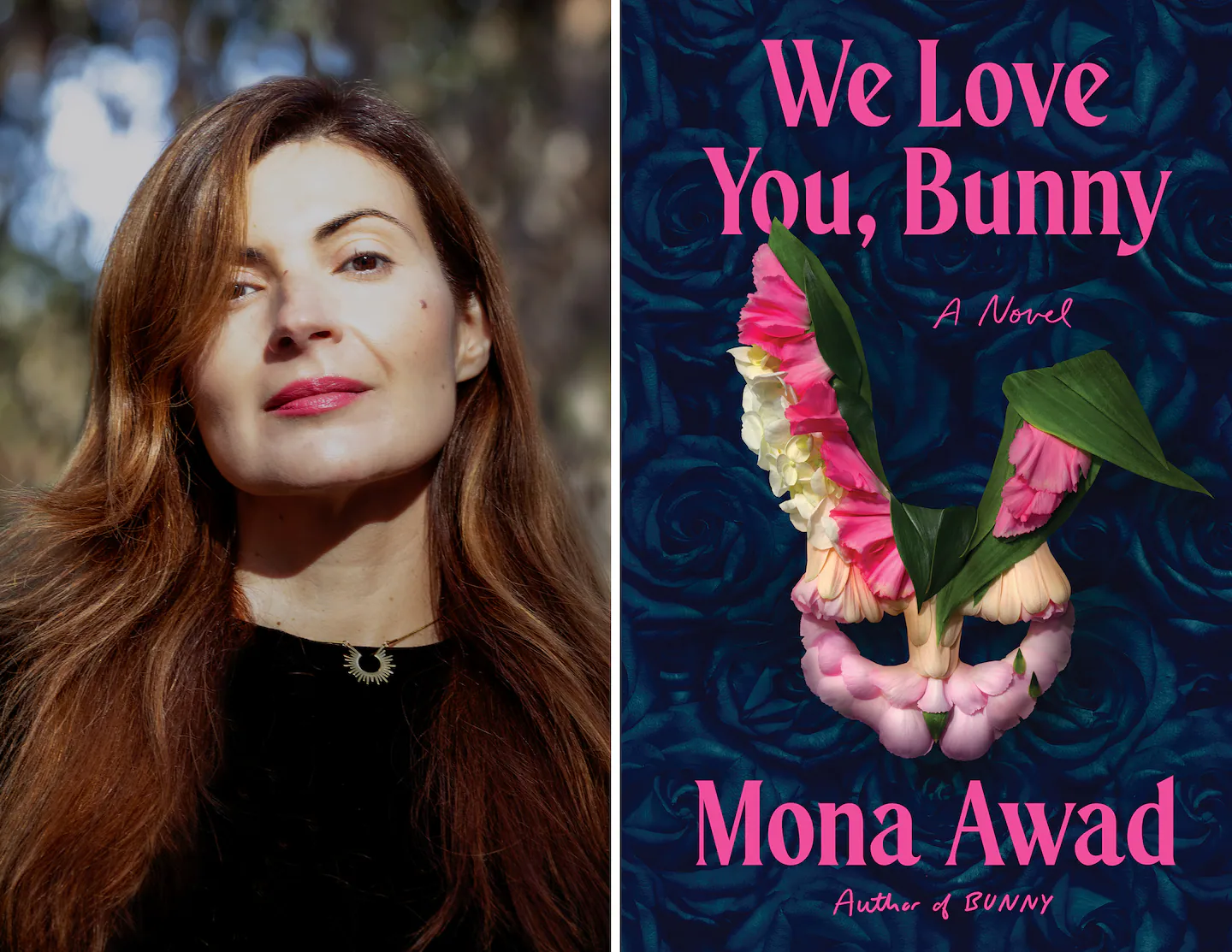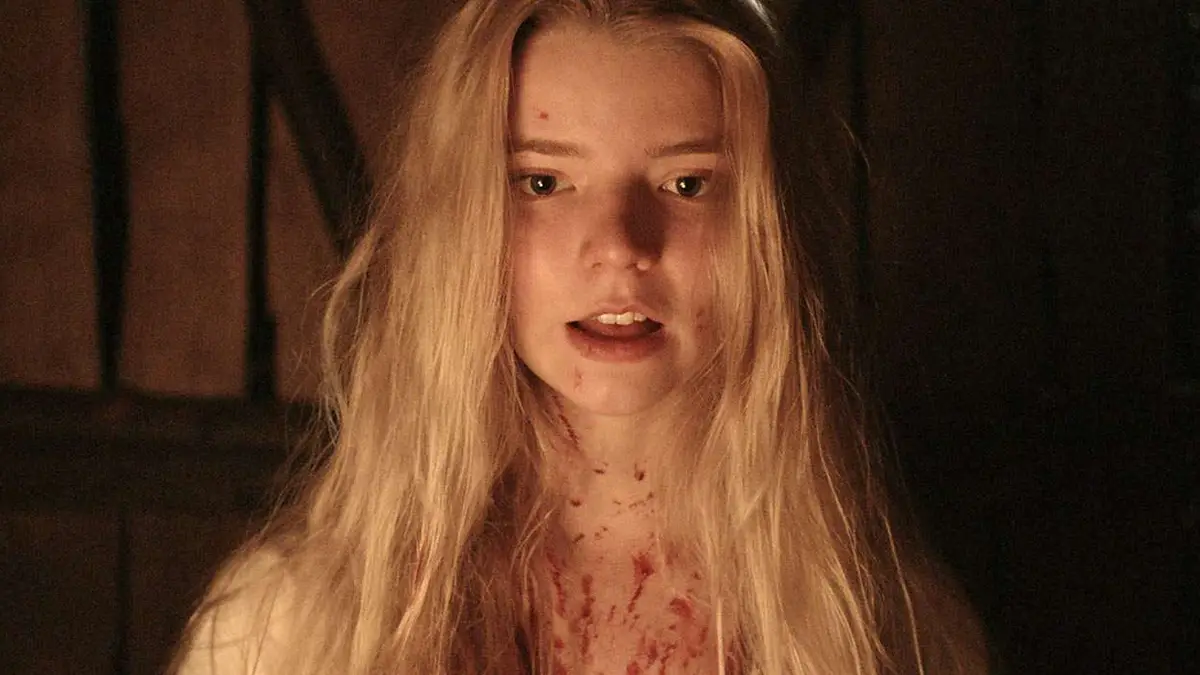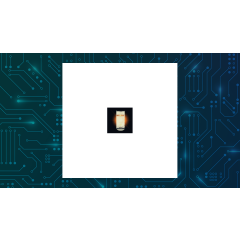
Awad, who is originally from Canada, splits her time between Boston, La Jolla, Calif., and Syracuse, N.Y., where she is a professor at Syracuse University’s MFA program. “Bunny” followed Samantha, a lonely outcast who becomes entranced by a wealthy, well-dressed (and creepy) group of women from her MFA cohort at the fictional Warren University. They are seemingly nameless, only referring to one another as “Bunny,” and after Samantha attends their mysterious Smut Salon, reality and fantasy start to blur. (Spoiler: The Bunnies use magical powers to transform rabbits into men, referring to them as “Drafts.” Bad “Drafts” are murdered in the name of creativity.)
In “We Love You, Bunny,” Awad flips the script, giving the seemingly monolithic Bunnies each a turn to tell their version of the story. Years after graduation, Samantha is kidnapped by her ex-frenemies while on tour for the book she has written about them. Since, according to them, there was a lot Samantha got deeply wrong, and they just want an opportunity to set the record straight, k?
When first published, “Bunny” was lauded by the likes of Time and Vogue magazines’ “Best of” lists and author Margaret Atwood, but received a second wind after enthusiastic readers shared the book on TikTok and Instagram. In 2023, production studio Bad Robot announced it had acquired the rights to adapt “Bunny” into a feature film, and Icelandic singer-songwriter Laufey revealed the title as the monthly pick for her Gen-Z-loved book club just this August.
Awad says the creativity behind the post-publication interest — including readers hosting their own Smut Salons and getting “Bunny”-inspired tattoos — encouraged her to expand “Bunny”‘s world: “I guess it was readers that gave me permission, but I always longed to return.”
Before the start of Awad’s tour (which is bookended by the Cambridge events), she spoke with the Globe from her La Jolla home about her New England inspirations, AI’s impact on creative writing, and why (of all things) a bunny can be terrifying.
Q. You got your MFA at Brown University — a college quite like Warren. Did your experience inspire the creation of the Bunny-verse?
A. It was my first experience of a New England college, which has its own vibe. As a Canadian, [it] was very mysterious. I was kind of enchanted. The experience of being an MFA student definitely has elements of the horror novel in there. It’s a very distinct atmosphere for a young artist to find themselves in. There are a lot of potential pitfalls, and I was interested in literalizing those in “Bunny.”
Q. Does now being a creative writing professor influence how you continue to build this world?
A. I have a lot more empathy now for teachers than I did before. It made my adults more dimensional, but, in my heart of hearts, I have the students’ perspective. I think every artist should behave like a student.
Q. It feels like AI has become something of an imminent force in higher education and creative writing.
A. My undergrad students use AI. But, I think, as a creative, the most powerful thing you have is your own voice. Embracing your own weirdness, really letting that be your North Star, is the way to survive this time [when] our work is in danger. It’s very sad that we want someone else to think for us. I hate that.
It’s one of those things where it’s [about] finding a balance. Some of these tools are probably helpful for us if we use them ethically. But it’s something that we have to be vigilant about.
Q. The Bunnies take some pretty unethical means to cultivate their creativity. But, from my understanding, Samantha was coded in a way that is similar to you. What was it like to write from the Bunnies’ perspective for “We Love You, Bunny” instead of Samantha’s?
A. It made me have more empathy for the Bunnies and have more impatience with Sam — which was part of the joy of writing. Samantha is an outsider. But what this book breaks open is that nobody feels like they belong completely, even if they look like they belong.
Q. This is also the first time that we get to hear the perspective of the Bunnies’ “Drafts.” Why did you think that it was important to give them a voice in the story, as well?
A. Part of the inspiration for [“We Love You, Bunny”] was “Frankenstein,” because it’s a story about the relationship between a creator and their creation. It just made sense to me that this book would finally give one of them a voice. When you make something, I believe that it has a life, and you have to honor that life. I don’t think the Bunnies necessarily honor the life [of their creations]. They kind of just try to claim it.
Q. Your books are largely satirical, but center conversations about body image, aging, and success for women. How do you approach these topics with humor and a critical eye, without engaging in the sexism or mockery sometimes associated with these tropes and themes?
A. Yeah, it’s such a delicate balance. And the truth is that I am enchanted by all things hyperfeminine, super enchanted. And all of my work, I think, shows that … [I’m] interested in engaging the hyperfeminine in some way and presenting it as both a place of power and possibility and beauty, and truly freedom, but also a place of constraint and misogyny.
Some hyperfeminine ideals make it feel like you could never be [good enough], like you’ll never, ever belong, or you’re embodying this thing that seems so impossible. The Bunnies, they are very hyperfeminine, and it’s a struggle. That’s what we see behind the curtain — it’s actually a struggle for them … and I like showing that, but I also like showing the power that it has over someone else. I love all things hyperfeminine, but also, they can sometimes be a prison.
Q. You weave emojis pretty extensively throughout the narrative of this novel. Many writers prefer to keep technology references vague to avoid dating their stories, but why did you decide to include them?
A. It’s because the Bunnies use emojis. I never realized just how much more power a sentence can have when you put a smile or a frown at the end of it. My work tends to be pretty surreal, so using some elements of popular culture helps to ground it, make it feel like it’s of this world, too. Pop will always date a text. But that’s OK.
Q. I wanted to talk about the symbol of the bunny. Symbols that are both potentially creepy and cute — like baby dolls or music boxes — are common, but why are bunnies particularly creepy?
A. I love bunnies, they’re so adorable. But they have a trickster energy to them, and they have both feminine and masculine properties. They feature a lot in horror, which is surprising, because they’re so sweet. But that’s the power of opposition. There is something about them that seems powerful in spite of the fact that they are prey.
Q. There’s “Donnie Darko,” which has to be one of the freakiest rabbits I’ve seen, or the David Lynch rabbits, which are also super scary.
A. Rabbits are tied to sexuality, and horror is all about desire.
Interview was edited and condensed.
MONA AWAD IN CONVERSATION WITH LAURA ZIGMAN FOR ‘WE LOVE YOU, BUNNY’
Presented by Harvard Book Store. The Brattle Theater, 40 Brattle St, Cambridge. Sept. 22, 6 p.m. Tickets start at $12. harvard.com



